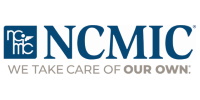The current requests for audits by Medicare are not an unusual review. In New York, there is currently a special services pre payment audit request for 98941 services as of October, 2010 and for 98942 services as of November 2009. Also, Medicare does ongoing CERT reviews on Chiropractic claims in which they will review records for proper documentation to support the claim and diagnosis that has been billed.
With the prepayment audit review, they seem to be sending a request letter for each patient and they are only asking for 3 months of records. A special services CERT request letter is usually 3-4 pages long, and they may ask for multiple patients or multiple dates of service, listed in chart form and they usually request 6 months of previous records.
According to Dr. Ritch Miller, ACA Medicare Committee chairman, you should and must comply. If for some reason you speak with anyone from the carrier/contractor, log the persons name, ID #, station number or whatever and write word for word what you are told. Normally we recommend not speaking with the contractor. KEEP TRACK OF EVERYTHING, and make 2 copies of everything you send to them.
Doctors are encouraged to review the Local Coverage Determination (LCD) for Chiropractic Services (L27350). LCDs can be accessed from the Medical Policy Center on the www.ngsmedicare.com web site; enter keyword L27350 in the Medical Policy Center search form field to access the Chiropractic Services policy. There is a detailed description on what you documentation should include for the initial visit and subsequent visits.
We also suggest before you start working on the audit, go to the ACA Medicare Webpage www.acatoday.org/medicare and read the links on audits/appeals. You and your staff should take the free 2 hour ACA Medicare documentation webinar. Then, we recommend that you read everything else on the webpage. You need to know everything you can about Medicare, now. So even if you think you know everything there is to know about Medicare, you need to read everything once again. In particular, some of the things (but not all) they are looking for include the diagnosis with a subluxation to correlate with the service code that is billed (98940, 98941, 98942). There should be a treatment plan for the condition. You should note the level of the subluxation adjusted. A PART exam should be done on the onset date of the condition treated with subsequent periodic re-exams and function assessments. Finally, every visit should be signed in full by the provider of the service. If you have not signed your notes attaché an attestation page with the visits. This can be found at www.ngsmedicare.com key word signature.
Other suggestions from Dr. Miller include the following. With regard to what documentation to send, we recommend you send everything in from the BOX 14 (CMS 1500) date on, even if it is a month or two longer than the 3 months, if that date is less than the 3 months then we suggest you send in 3 months documentation if the patient was treated at that time. Make sure you send all supporting documentation even if it is several years old, like the patients original intake forms if that has historical information on it, if this information is found in no other place in the records.
Many doctors’ first react with anger and frustration when they start to get these audits. That is not helpful and in past cases has made things a whole lot worse. Be as pleasant as you can be with anyone you speak with.
Only send in patient records, do not send in any explanatory letters or anything that is not an "official" patient record, since it can be used against you and since it is not official it cannot be used in your favor.
If you get denied on any of the claim(s), you we recommend that you consider an appeal, if the documentation supports the service billed, even if you are asked to return only $20. It is a temptation to not go further, but that may be seen as admission of guilt and they more than likely will continue with future audits.
Hopefully this won't turn into the battle that many other states are going through across the country, but you must prepare for the worst and expect the best. There are doctors across the country, (and again hopefully you are not one of them), that have been carrying on this battle for over two years. So you must take this very, very seriously.
The ACA is working on this with CMS and hopefully we can turn this around. Unfortunately, with the executive branch and administration's increased and well publicized focus on fraud and abuse, don't plan on that.
If you have any questions, please first go to the ACA webpage www.acatoday.org and see if you can find the answer there. If not please contact Dr. Lupinacci or Dr. Penna. If you have any questions specific to this notice, please feel free to contact either of us also.
Sincerely,
Dr. Louis Lupinacci, DC
NY Medicare Chiropractic CAC Rep
Dr. Mariangel Penna, DC
NY Alternate Medicare CAC Rep




